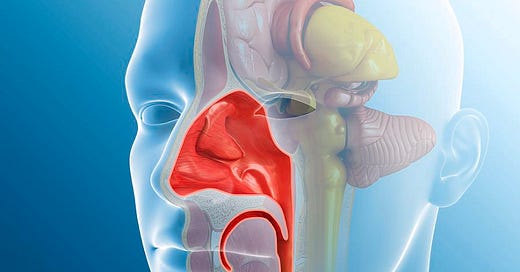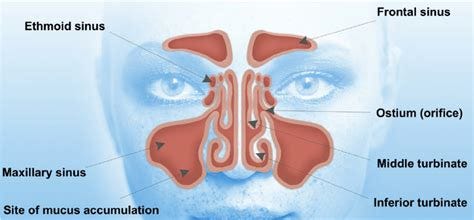The Ingenious Design of the Human Sinus Cavity:
The Guardian of Clean Air and Health By PopPopThePatriot
The human body is a marvel of intricate design, with each part serving a unique purpose. Among its remarkable features, the sinus cavity stands as a silent guardian, relentlessly filtering and cleansing the air we breathe. A true testament to evolutionary brilliance, this unassuming structure not only keeps our respiratory system in check but also offers numerous health benefits, making breathing through the nose rather than the mouth the natural and preferred choice.
Nestled within the bones of our face, the sinus cavity comprises a network of hollow spaces, lined with specialized mucus-producing cells and cilia. As we inhale, air passes through the nasal passages, where it is warmed, humidified, and purified before it reaches the lungs. This filtering mechanism acts as a natural defense, trapping harmful particles, allergens, dust, and bacteria, thereby preventing potential respiratory issues.
The first line of defense is the nasal hairs, acting as filters to catch larger particles. The air then meets the mucous membranes, which secrete a thin layer of mucus, serving as a sticky trap for smaller particles. The cilia, tiny hair-like projections, work in harmony, propelling the mucus and trapped particles toward the throat, where they are swallowed and disposed of safely.
Breathing through the nose serves as the most efficient route for optimal lung function and overall health. One crucial advantage of nasal breathing lies in its ability to control the volume of air entering the lungs. When we breathe through the mouth, we tend to inhale larger volumes of air rapidly, leading to shallower breathing patterns. This can result in reduced oxygen exchange and less efficient use of the lungs.
On the other hand, nasal breathing allows for regulated airflow, ensuring the air reaches deeper into the lungs and providing a better exchange of gases, particularly oxygen and carbon dioxide. This is of paramount importance for individuals engaging in physical activities, as nasal breathing helps maintain stamina and reduces the risk of fatigue.
Additionally, the nose plays a significant role in maintaining the body's moisture balance. Breathing through the mouth leads to excessive drying of the oral cavity, potentially causing discomfort, bad breath, and an increased susceptibility to oral health issues. Nasal breathing keeps the nasal passages moist, reducing the risk of infections and promoting a healthier environment for the respiratory system.
Furthermore, nasal breathing supports the body's parasympathetic nervous system, promoting relaxation and reducing stress. This is in stark contrast to mouth breathing, which can trigger the sympathetic nervous system and contribute to feelings of anxiety and heightened stress levels.
Chronic mouth breathing has been associated with various health problems, ranging from sleep disturbances, dental issues, and respiratory infections to reduced cognitive performance. Children who breathe through their mouths frequently may also experience facial developmental changes, leading to "long face syndrome."
In conclusion, the human sinus cavity's ingenious design, with its intricate filtering and cleansing mechanisms, is an essential guardian of clean air and optimal health. By embracing the natural act of breathing through the nose, we can harness its numerous benefits, from improved lung function and better oxygen exchange to enhanced overall well-being. Let us be mindful of this remarkable gift from evolution and take a breath—the right way.





